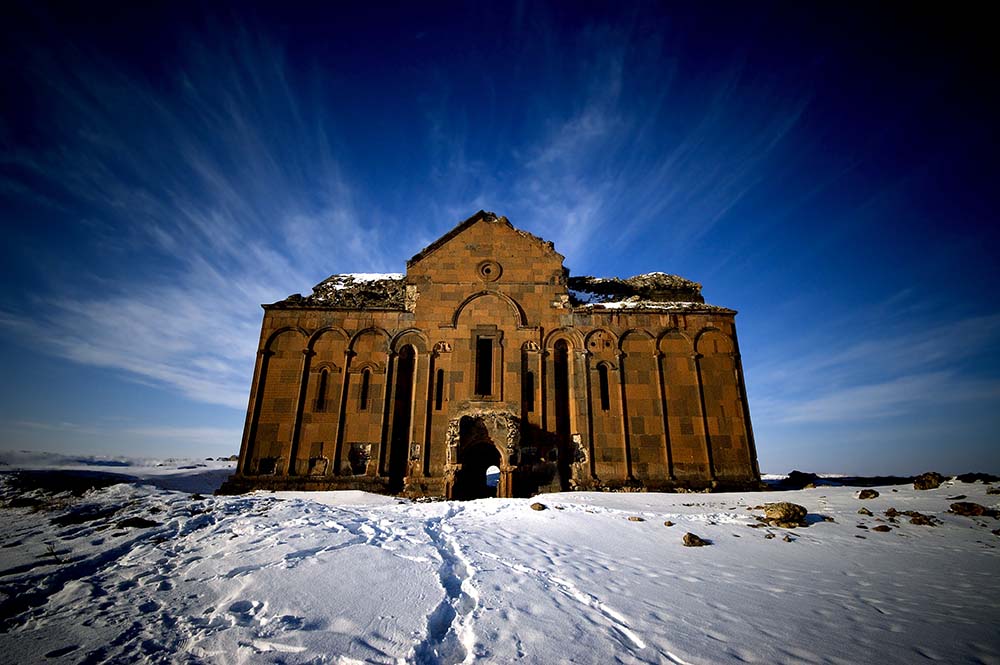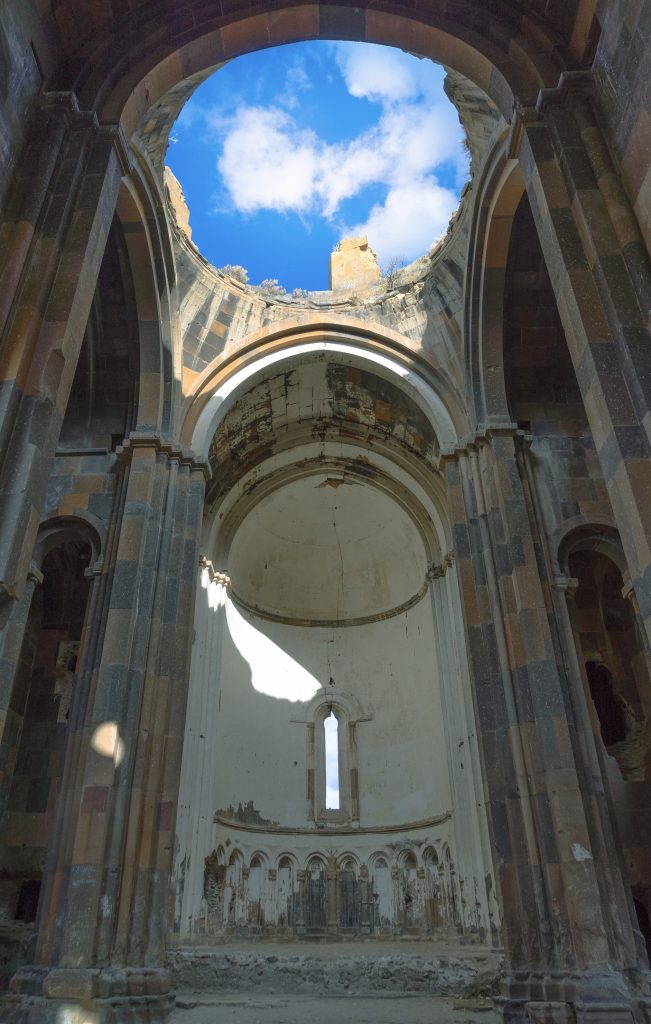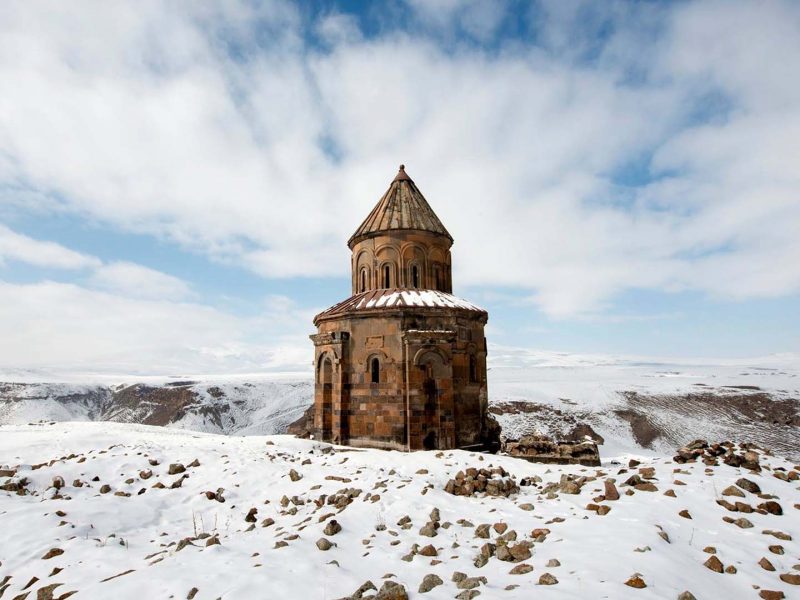The beginning of the Ani Ruins dates back to 350-300 B.C. It is about 40 kilometers away from Kars province and regarded as sacred, according to Armenian and Christian beliefs. Ani City was first discovered in 1880s. There are 823 buildings and caves within Ani Ruins, which is also called 1001 Church City or the 40-Door City.

Ani Ruins in Kars.
Ani City is an old settlement area and has over time hosted many civilizations. Indeed, Ani City was established on an area which is a couple of times bigger than Efes Ancient City. At the time it was established, it was situated on the Silk Road, so Ani City was used for accommodation and for trading. The Silk Road bridge was built over Arpaçay River and it linked Turkey to Armenia. However, there are just a few remnants from this bridge left today. Ani City was established on an area which is a couple of times bigger than Efes Ancient City. Many historical artifacts are still waiting to be excavated here.

Ancient cathedral in Ani.
The city walls of Ani were built to be so strong and so strategic that it seemed impossible for soldiers to enter this city at the time. Telescopic walls were designed and built quite cleverly. Today, only a few remnants exist from these walls. The city became unusable after attacks and because of earthquakes.
Extant structures to see at Ani Ruins include 1 mosque, 8 churches, and the fortified city wall. The gate, called Lion Gate, constitutes the main entrance to the city. Ani City is surrounded by Arpaçay Canyon on two sides and its third side toward the plateau was protected by strong walls that were built back in the 10th century.
Dikran Honentz Church, which is within the valley, was repaired in 1215. After the repair, it was decorated with frescoes that reflect Armenian church traditions. Among these frescoes are scenes from the life of Saint Grigor Lusavoriç who brought Christianity to the Armenians. Another structure, Abugamir Pahlavuni Church, carries with its aesthetic traits from c. 1020. It is clear that Islamic architecture was the focus during construction of this church. During later periods, these traits were again used in Seljukian architecture. Halaskar Church, said to date to c. 1035, was built in a circular structure. Half of it collapsed when struck by a lightning in 1957, and the rest has survived until today, in its damaged state. Menuçihr Mosque was the first (and remains the oldest) mosque built in our country’s lands after the Turks conquered Ani. It first underwent extensive repairs in the 14th century.
Train wagons of the Diesel Train East express between Ankara and Kars. Today, Ani Ruins has reached legendary status. According to lore, once upon a time, there were two countries separated by a river. Merchants of one country would come and go to the other country. Both the merchants and the people who ruled the country were good, honest people. However, the ruler one day changed and decided to alter the existing rights and laws. Merchants became upset when they saw that the traditions were being ignored, because innocent people were being treated unfairly, rights were taken away from orphans, and even judges seemed without remorse.

Church of St. Gregory in Ani.
Merchants were desperate during this period, a time when justice could not be secured. They shouted, “We hope you’ll get petrified!” and instantly, the whole city was suddenly turned to rock. At this point, the city was named Ani (or, Sudden). Having hosted many societies and with such a long, rich history as its background, history is literally in the air, and Ani City remains one of the precious historical places that you should definitely get to know.

